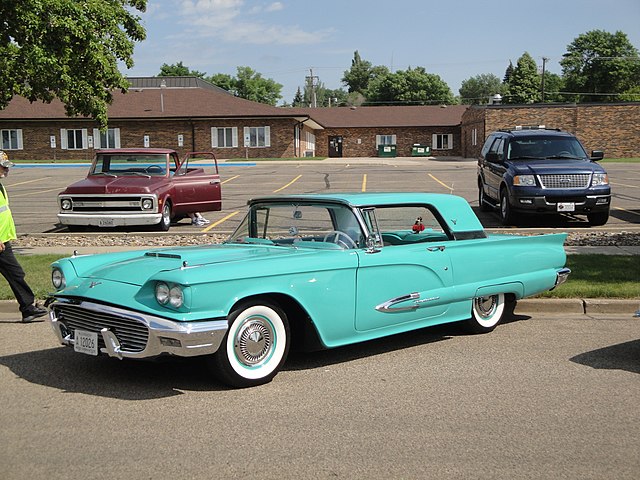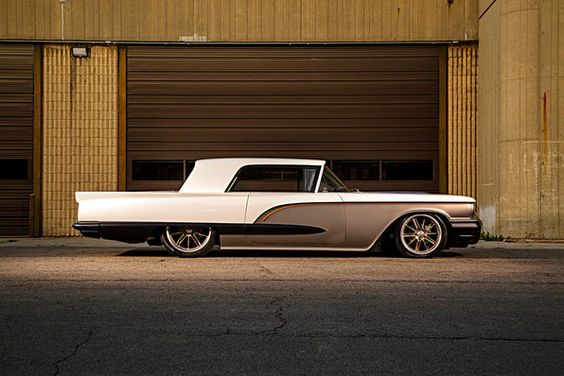
The Ford Thunderbird entered its second generation with a bold new design and an expanded role in Ford’s lineup, debuting in 1958 and running until 1960.
Known as the “Square Bird” because of its angular styling, this generation marked a significant departure from the original Thunderbird’s two-seater configuration. Instead, the new model was designed as a four-seater luxury car, aligning more closely with personal luxury vehicles of the era.
This transformation was aimed at increasing sales and market appeal, which it successfully achieved by offering more practicality without sacrificing the Thunderbird’s iconic style.
Design and Styling

The second generation Thunderbird showcased a radical redesign that embraced contemporary trends towards larger, more angular cars. It featured a unibody construction, a first for Ford, which contributed to a lower, wider stance that was both stylish and functional, improving handling and ride comfort.
The distinctive rear tailfins and a larger grille made it instantly recognizable. The interior was equally luxurious, featuring front bucket seats and a rear seat, increasing its appeal as a family-capable luxury car.
Notably, the design incorporated novel features like a floating rear view mirror and an optional sliding metal sunroof, which was a novelty at the time.
Performance and Engineering

Under the hood, the Thunderbird was equipped with powerful V8 engines throughout its second generation. The initial 1958 model was powered by a 352 cu in (5.8 L) FE V8 engine, producing 300 horsepower.
This setup included a four-barrel carburetor and dual exhausts, providing significant performance despite the vehicle’s larger size. In 1960, Ford introduced an even more powerful 430 cu in (7.0 L) MEL V8 engine as an option, elevating the Thunderbird to near-muscle car performance levels.
The Thunderbird also featured innovations such as a “Cruise-O-Matic” three-speed automatic transmission and power-assisted brakes and steering, enhancing its reputation for smooth driving and robust performance.
Market Impact and Legacy

The second generation Thunderbird was a commercial success, significantly outselling the first generation. It appealed to a broader audience seeking luxury and performance in a stylish, comfortable package.
By shifting to a four-seat configuration, Ford tapped into the growing market for family-friendly luxury cars, setting a trend for personal luxury coupes that would continue throughout the 1960s and beyond.
The “Square Bird” was critically acclaimed as well, winning Motor Trend’s Car of the Year in 1958. This generation’s success established the Thunderbird as a staple in Ford’s lineup and a symbol of American automotive luxury.
Collectibility and Historical Significance
Today, the second generation Thunderbird is celebrated as a classic in the world of car collectors and enthusiasts. Its unique blend of 1950s jet-age styling with early 1960s sophistication makes it particularly desirable.
The model’s historical significance is heightened by its role in transitioning the Thunderbird from a sports car to a luxury car, reflecting broader shifts in American automotive design and culture during the late 1950s.
As a collectible, it remains relatively accessible compared to other cars of its era, though prices can vary significantly based on condition, provenance, and originality.
Conclusion
The second generation Ford Thunderbird is a quintessential example of American automotive innovation and luxury during a pivotal era. With its bold styling, enhanced performance, and luxurious amenities, it captured the imagination of the public and carved a niche that would influence the direction of Ford’s design and marketing strategies for years to come.
As both a collector’s item and a piece of automotive history, the “Square Bird” continues to be revered for its significant contributions to the evolution of the personal luxury car segment.
